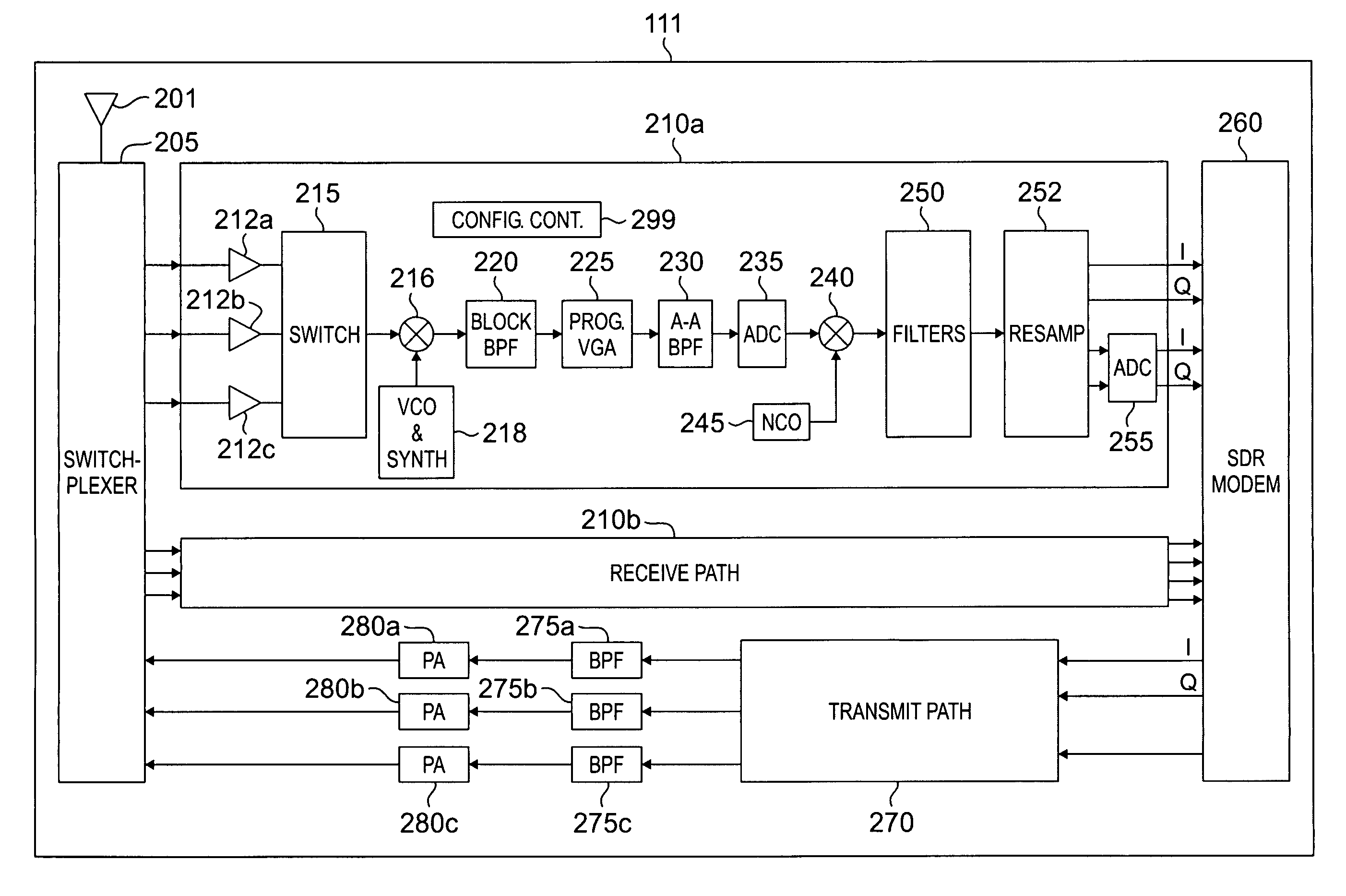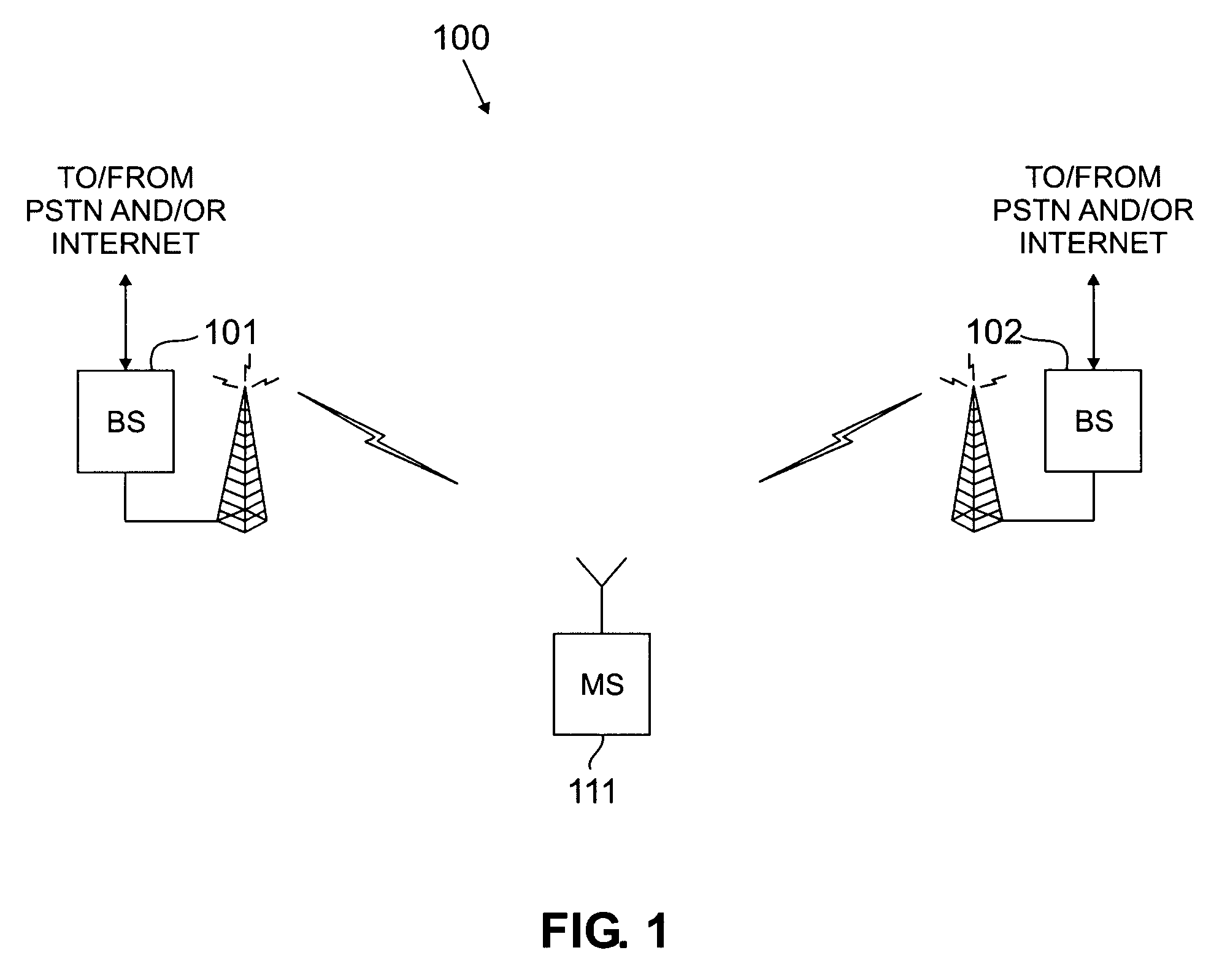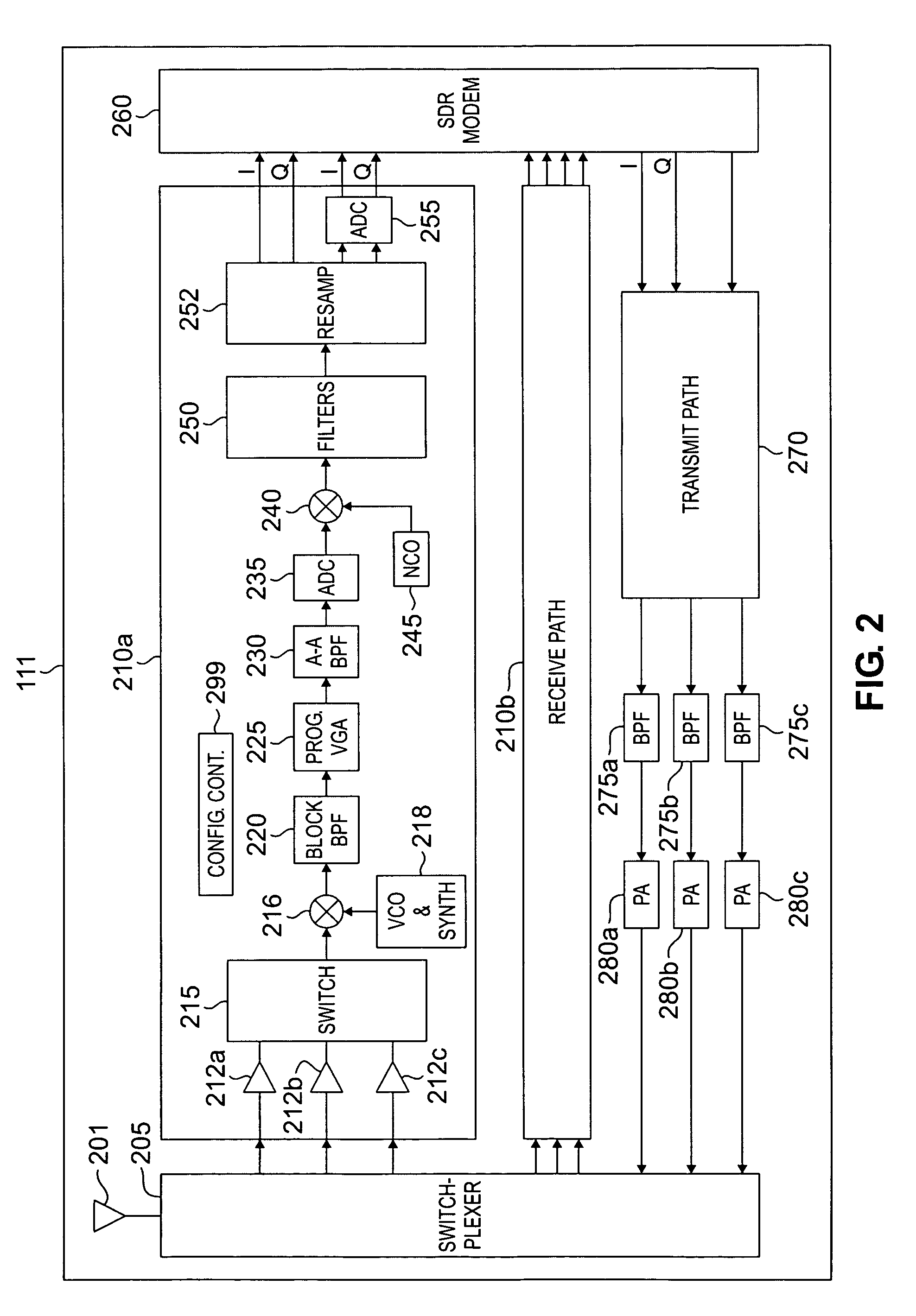Common radio architecture for multi-mode multi-band applications
a radio architecture and multi-band technology, applied in the field of wireless networks, can solve the problems of inconvenient and difficult wireless access standards, inability to meet the end-user expectations of a ubiquitous network with mobile stations, and generally high power consumption of mobile stations, so as to reduce the processing rate of the digital intermediate frequency (dif) receiver component, reduce the power consumption of soft-ware defined radio processing elements, and reduce the sampling rate
- Summary
- Abstract
- Description
- Claims
- Application Information
AI Technical Summary
Benefits of technology
Problems solved by technology
Method used
Image
Examples
Embodiment Construction
[0021]FIGS. 1 through 3, discussed below, and the various embodiments used to describe the principles of the present invention in this patent document are by way of illustration only and should not be construed in any way to limit the scope of the invention. Those skilled in the art will understand that the principles of the present invention may be implemented in any suitably arranged multi-mode, multi-band mobile station.
[0022]FIG. 1 illustrates wireless communication system 100, in which multi-mode, multi-band mobile station (or wireless terminal) 111 may communicate with base stations operating under different air interface standards. In FIG. 1, it is assumed that base station 101 is part of a first wireless network operating according to a first air interface standard (e.g., CDMA2000 in this example). It is further assumed that base station 102 is part of a second wireless network operating according to a second air interface standard (e.g., GSM in this example). Mobile station...
PUM
 Login to View More
Login to View More Abstract
Description
Claims
Application Information
 Login to View More
Login to View More - R&D
- Intellectual Property
- Life Sciences
- Materials
- Tech Scout
- Unparalleled Data Quality
- Higher Quality Content
- 60% Fewer Hallucinations
Browse by: Latest US Patents, China's latest patents, Technical Efficacy Thesaurus, Application Domain, Technology Topic, Popular Technical Reports.
© 2025 PatSnap. All rights reserved.Legal|Privacy policy|Modern Slavery Act Transparency Statement|Sitemap|About US| Contact US: help@patsnap.com



